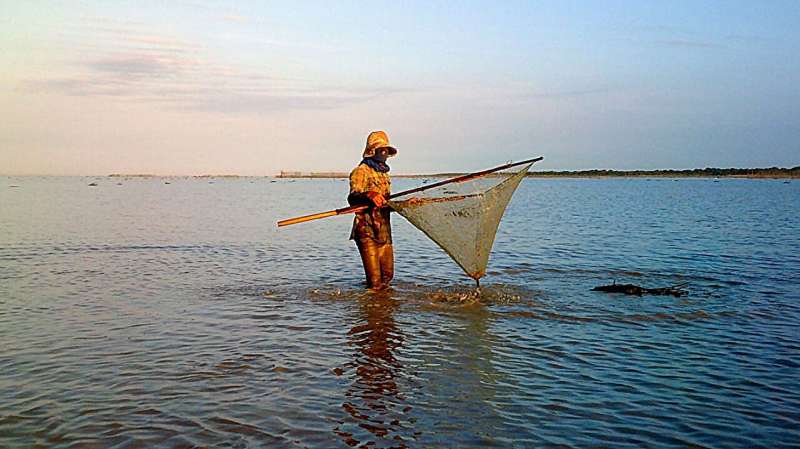This article has been reviewed according to Science X's editorial process and policies. Editors have highlighted the following attributes while ensuring the content's credibility:
fact-checked
peer-reviewed publication
trusted source
proofread
Self-portraits give voice to vulnerable Cambodian fishing communities

A study that used photos taken by participants to spark conversation reveals firsthand accounts of how climate change, land use and dams on the Mekong River are threatening the future of the communities dependent on those ecosystems.
The study, published in Ecology and Society, which brought together Cornell researchers, Cambodian fishers and Cambodian researchers, used a methodology called photovoice. With photovoice, study participants take photos that researchers then use to facilitate interviews and group discussions during which the subjects share their life experiences and perspectives.
"Voices of the most vulnerable resource users are poorly integrated into traditional scientific knowledge," said Kathryn Fiorella, assistant professor in the Department of Public and Ecosystem Health in the College of Veterinary Medicine and first author of the study. "Photovoice is a methodology that goes very quickly to the heart of what people are thinking. And these perspectives are fundamental to understand interactions between livelihoods and environmental change, and ultimately underlie successful resource management."
Fiorella, along with Elizabeth Fox '09, Ph.D. '16, assistant professor of practice in the Department of Public and Ecosystem Health, and two former master of public health students at CVM, collaborated with Cambodian researchers to select 37 participants. They came from four fishing villages adjacent to Cambodia's Tonle Sap Lake and from communities within its floodplain, capturing the diversity of fishing activities. The researchers gave cameras to participants and asked them to document the role that fish play in their lives.
Some expected topics emerged from the interviews and group discussions, including income generated from fishing activities, fish consumption and fish biodiversity. The researchers were surprised, however, when the photovoice participants mentioned they are increasingly shifting away from fishing as a livelihood. Differences also emerged between different communities. For example, those living in areas that flood during the wet season had no alternative livelihoods and faced much more acute challenges.
Legality was another theme that surfaced when people contrasted their small-scale methods with those of large fishers. "They dubbed large-scale fishing illegal, which may or may not have been," Fiorella said. "Legality was more about what was sustainable for the fisheries. Fishing community members spoke of the sharp power imbalance they perceived and how it affects their livelihoods, rather than actual fishing regulations."
The perspectives collected in this study are meant to inform future government initiatives and bolster existing programs such as the Community Fish Refuges program that manages ponds that hold water throughout the year and provide a dry season sanctuary for breeding fish.
More information: Kathryn Fiorella et al, Environmental change and resource access in aquatic food systems: a Photovoice case study of Cambodian fisheries, Ecology and Society (2023). DOI: 10.5751/ES-14273-280425
Journal information: Ecology and Society
Provided by Cornell University





















